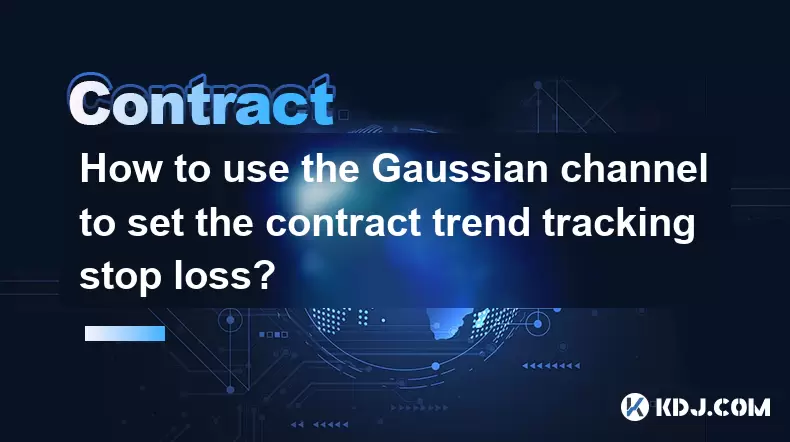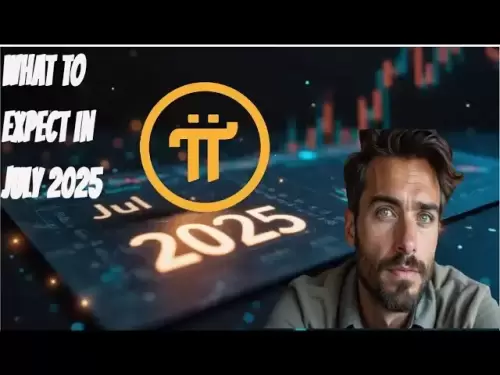-
 Bitcoin
Bitcoin $107,443.3008
-1.17% -
 Ethereum
Ethereum $2,494.2503
-0.63% -
 Tether USDt
Tether USDt $1.0003
0.00% -
 XRP
XRP $2.2496
2.23% -
 BNB
BNB $658.7569
0.63% -
 Solana
Solana $154.9826
1.94% -
 USDC
USDC $1.0000
0.01% -
 TRON
TRON $0.2799
1.07% -
 Dogecoin
Dogecoin $0.1659
-1.78% -
 Cardano
Cardano $0.5745
0.25% -
 Hyperliquid
Hyperliquid $39.7005
0.13% -
 Bitcoin Cash
Bitcoin Cash $519.5989
3.78% -
 Sui
Sui $2.7874
-2.40% -
 Chainlink
Chainlink $13.3762
-1.69% -
 UNUS SED LEO
UNUS SED LEO $9.0784
-0.64% -
 Avalanche
Avalanche $17.9846
-2.81% -
 Stellar
Stellar $0.2390
-0.06% -
 Toncoin
Toncoin $2.9028
0.25% -
 Shiba Inu
Shiba Inu $0.0...01147
-2.17% -
 Litecoin
Litecoin $86.6956
-1.27% -
 Hedera
Hedera $0.1508
-0.50% -
 Monero
Monero $322.6222
3.26% -
 Polkadot
Polkadot $3.4124
-2.99% -
 Dai
Dai $0.9999
0.00% -
 Bitget Token
Bitget Token $4.5434
-1.97% -
 Ethena USDe
Ethena USDe $1.0002
0.00% -
 Uniswap
Uniswap $7.1562
-2.61% -
 Aave
Aave $275.8830
-1.02% -
 Pepe
Pepe $0.0...09790
-4.04% -
 Pi
Pi $0.5018
-5.09%
Will a BitFlyer perpetual contract blow up
BitFlyer's perpetual contracts offer opportunities but necessitate a comprehensive understanding of risks, including market volatility, leverage, funding rates, exchange reliability, and prudent trading strategies to prevent a blow-up.
Nov 18, 2024 at 11:42 am

Understanding the Potential Risks and Mitigating Factors in BitFlyer Perpetual Contracts
Introduction:
In the realm of digital asset trading, perpetual contracts have emerged as a highly popular and potentially lucrative instrument. However, understanding the inherent risks associated with these contracts is crucial for investors to navigate the market effectively. BitFlyer, a prominent Japanese cryptocurrency exchange, offers perpetual contracts for several major digital assets, including Bitcoin and Ethereum. Assessing the potential for a blow-up in these BitFlyer contracts requires careful analysis of various factors, including market conditions, trading strategies, and risk management measures.
Factors Influencing the Potential for a Blow-Up:
1. Market Volatility:
Perpetual contracts are highly leveraged instruments, which amplifies the impact of market fluctuations. Extreme price volatility, either bullish or bearish, can trigger substantial losses or even complete loss of capital for traders who are not adequately prepared. Sharp market moves can lead to margin calls, where traders are required to post additional funds to maintain their positions. Failure to meet these margin calls can result in the liquidation of the trader's position, leading to a substantial loss.
2. Trading Strategy and Risk Management:
The trading strategy employed by a trader significantly influences the potential for a blow-up. High-leverage trading, where traders borrow large sums of money to increase their purchasing power, amplifies gains and losses. However, this strategy also elevates the risk of substantial losses, especially during periods of market volatility or unfavorable price movements. Effective risk management techniques, such as setting stop-loss orders and managing position size, can help mitigate the impact of adverse market conditions.
3. Funding Rate and Margin:
BitFlyer perpetual contracts utilize a funding rate mechanism to maintain the price of the contract in line with the spot market. The funding rate can fluctuate based on market conditions, affecting the cost of holding long or short positions. Negative funding rates can add to the risk of holding a position, potentially leading to a margin call if not adequately managed. Ensuring sufficient margin to cover potential funding rate fluctuations is crucial to reduce the risk of a blow-up.
4. Exchange Reliability and Execution:
The reliability and execution capabilities of the exchange facilitating the perpetual contracts play a vital role in mitigating the potential for a blow-up. Exchanges with robust trading infrastructure, strong risk management systems, and reliable order execution processes minimize the risk of system failures and ensure fair and orderly trading. BitFlyer, with its established reputation and consistent performance, provides a reliable trading environment for perpetual contracts.
Steps to Mitigate Risks and Prevent a Blow-Up:
1. Understand Market Volatility and Risk:
Traders should thoroughly research the market and understand the potential fluctuations and risks associated with digital asset trading. Staying informed about market news, technical analysis, and economic indicators enables traders to make informed decisions and adapt to changing market conditions.
2. Choose a Prudent Trading Strategy:
High-leverage trading strategies should be employed with caution and only by experienced traders who fully understand the risks involved. Consider using lower leverage levels, especially during periods of high market volatility, to reduce the potential for substantial losses.
3. Implement Effective Risk Management Techniques:
Establish clear risk limits, set stop-loss orders to automatically close positions at predefined levels, and manage position size based on available capital. Additionally, diversify your portfolio across multiple assets to reduce the impact of adverse price movements in any one asset.
4. Monitor Market Conditions and Positions Closely:
Stay vigilant in monitoring market conditions, news events, and the performance of your positions. Regular review of margin levels, funding rates, and overall market sentiment helps identify potential risks and allows for timely adjustments to your trading strategy.
5. Choose a Reliable Exchange with Robust Trading Infrastructure:
Select an exchange that prioritizes security, reliability, and transparent trading practices. BitFlyer, with its strong track record and commitment to fair and orderly trading, offers a trustworthy environment for perpetual contract trading.
6. Continuously Educate and Adapt:
The digital asset market is constantly evolving, and staying up-to-date with industry news, market analysis, and trading techniques is essential. Continuous education and adaptation enhance your understanding of the market and equip you with the knowledge to navigate risks effectively.
7. Seek Professional Advice and Education:
Consider consulting with experienced traders or financial professionals to gain insights and guidance on trading perpetual contracts. Educational resources and training programs can also provide valuable knowledge to refine your trading strategies and risk management skills.
Conclusion:
By understanding the potential risks and employing appropriate risk mitigation strategies, traders can significantly reduce the likelihood of a blow-up in BitFlyer perpetual contracts. Due diligence, effective risk management, and continuous education are essential pillars of successful perpetual contract trading.
Disclaimer:info@kdj.com
The information provided is not trading advice. kdj.com does not assume any responsibility for any investments made based on the information provided in this article. Cryptocurrencies are highly volatile and it is highly recommended that you invest with caution after thorough research!
If you believe that the content used on this website infringes your copyright, please contact us immediately (info@kdj.com) and we will delete it promptly.
- Solana, Pepe Coin, Crypto Meme Mania: What's Hot and What's Not?
- 2025-07-01 19:10:12
- Bitcoin Cash Price Pump: Unpacking the Reasons Behind the Surge
- 2025-07-01 18:30:12
- Dogecoin's Wild Ride: Rally Potential Amidst Investor Panic?
- 2025-07-01 19:10:12
- Algorand, Wormhole, and Interoperability: A New Dawn for DeFi
- 2025-07-01 19:15:12
- CATL's Indonesian Battery Blitz: A 6 Billion Dollar Bet on the Future
- 2025-07-01 19:20:14
- Bitcoin, PEP-20, and the Token Standard Revolution: Is Bitcoin Pepe the Next Big Thing?
- 2025-07-01 18:30:12
Related knowledge

How to use the price slope to filter the false breakthrough signal of the contract?
Jun 20,2025 at 06:56pm
Understanding the Concept of Price Slope in Contract TradingIn contract trading, especially within cryptocurrency derivatives markets, price slope refers to the rate at which the price changes over a specific time period. It helps traders assess the strength and sustainability of a trend. A steep slope may indicate strong momentum, while a shallow slope...

How to determine the expected volatility of the contract through the volatility cone?
Jun 19,2025 at 12:28pm
Understanding the Basics of Volatility in Cryptocurrency ContractsIn the realm of cryptocurrency trading, volatility is a key metric that traders use to assess potential risk and reward. When dealing with futures contracts, understanding how volatile an asset might become over time is crucial for position sizing, risk management, and strategy developmen...

How to formulate a contract intraday trading plan in combination with the pivot point system?
Jun 21,2025 at 03:42pm
Understanding the Basics of Pivot Points in Cryptocurrency TradingPivot points are technical analysis tools used by traders to identify potential support and resistance levels. These levels are calculated using the previous day's high, low, and closing prices. In the context of cryptocurrency trading, where markets operate 24/7, pivot points help trader...

How to adjust the contract position ratio through the price fluctuation entropy?
Jun 22,2025 at 11:42am
Understanding Price Fluctuation Entropy in Cryptocurrency ContractsIn the world of cryptocurrency futures trading, price fluctuation entropy is a relatively new concept used to measure market volatility and uncertainty. It derives from information theory, where entropy refers to the degree of randomness or unpredictability in a system. In crypto contrac...

How to use the volume swing indicator to predict the contract volume-price divergence?
Jun 18,2025 at 11:42pm
Understanding the Volume Swing IndicatorThe volume swing indicator is a technical analysis tool used primarily in cryptocurrency trading to evaluate changes in volume over time. Unlike price-based indicators, this metric focuses solely on trading volume, which can provide early signals about potential market reversals or continuations. The key idea behi...

How to use the Gaussian channel to set the contract trend tracking stop loss?
Jun 18,2025 at 09:21pm
Understanding the Gaussian Channel in Cryptocurrency TradingThe Gaussian channel is a technical indicator used primarily in financial markets, including cryptocurrency trading, to identify trends and potential reversal points. It is based on statistical principles derived from the normal distribution, commonly known as the Gaussian distribution or bell ...

How to use the price slope to filter the false breakthrough signal of the contract?
Jun 20,2025 at 06:56pm
Understanding the Concept of Price Slope in Contract TradingIn contract trading, especially within cryptocurrency derivatives markets, price slope refers to the rate at which the price changes over a specific time period. It helps traders assess the strength and sustainability of a trend. A steep slope may indicate strong momentum, while a shallow slope...

How to determine the expected volatility of the contract through the volatility cone?
Jun 19,2025 at 12:28pm
Understanding the Basics of Volatility in Cryptocurrency ContractsIn the realm of cryptocurrency trading, volatility is a key metric that traders use to assess potential risk and reward. When dealing with futures contracts, understanding how volatile an asset might become over time is crucial for position sizing, risk management, and strategy developmen...

How to formulate a contract intraday trading plan in combination with the pivot point system?
Jun 21,2025 at 03:42pm
Understanding the Basics of Pivot Points in Cryptocurrency TradingPivot points are technical analysis tools used by traders to identify potential support and resistance levels. These levels are calculated using the previous day's high, low, and closing prices. In the context of cryptocurrency trading, where markets operate 24/7, pivot points help trader...

How to adjust the contract position ratio through the price fluctuation entropy?
Jun 22,2025 at 11:42am
Understanding Price Fluctuation Entropy in Cryptocurrency ContractsIn the world of cryptocurrency futures trading, price fluctuation entropy is a relatively new concept used to measure market volatility and uncertainty. It derives from information theory, where entropy refers to the degree of randomness or unpredictability in a system. In crypto contrac...

How to use the volume swing indicator to predict the contract volume-price divergence?
Jun 18,2025 at 11:42pm
Understanding the Volume Swing IndicatorThe volume swing indicator is a technical analysis tool used primarily in cryptocurrency trading to evaluate changes in volume over time. Unlike price-based indicators, this metric focuses solely on trading volume, which can provide early signals about potential market reversals or continuations. The key idea behi...

How to use the Gaussian channel to set the contract trend tracking stop loss?
Jun 18,2025 at 09:21pm
Understanding the Gaussian Channel in Cryptocurrency TradingThe Gaussian channel is a technical indicator used primarily in financial markets, including cryptocurrency trading, to identify trends and potential reversal points. It is based on statistical principles derived from the normal distribution, commonly known as the Gaussian distribution or bell ...
See all articles

























































































